24 Dec South Korea Travel Itinerary from 5, 7, 10 days to 3 weeks
Rabindranath Tagore, a famous Indian poet lovingly called Korea the ‘Land of the Morning Calm’. But for me, Korea was the ‘Land of my Dreams’. It got dreamier with the number of K-dramas I watched. I started with the romantic ones, moved on to some sci-fi, comedy and family drama, and then gulped up the historical ones. In fact, for the first two days in Seoul, I honestly thought I was inside a K-drama. It seemed all so real!
Let’s not get carried away. We will talk about South Korea and where to spend your time. But regardless, you will not regret spending more time in South Korea. However, the lack of international cuisine did make a little homesick. But there are plenty of places to put inside your travel itinerary to South Korea. You may be acquainted with the popular ones like Seoul, Busan and Jeju Island.
If you have more time, there are so many great unexplored places that tourists often overlook. Japan has always overshadowed South Korea’s tourism popularity in the East. But I enjoyed the hospitality of Koreans much more. The country is fun, lively and welcoming to tourists. Not to forget, so many tourist attractions are discounted or free where instructions are available in English. So I won’t mind overselling Korea over Japan (Bite me!).
Top places to visit in South Korea
Seoul
Seoul is the largest city in South Korea. It is its cultural, economic and political centre where most of South Korea’s population resides. There are a lot of chances that you will be flying to and from Seoul and then travelling from there. Seoul is an enormous metropolis and there is so much to do. You can stay in Seoul for a month and you can still see new stuff.
Some of the popular places to visit are Gyeongbokgung and Changdeokgung Palace, two of the four major palaces from the Joseon Dynasty. You will find Namsan Park and N Seoul Tower, the city’s poster child. Numerous day markets and night markets sit at different corners of the city. But I enjoyed the museums the most, a lot of which were free for tourists to visit. Some of the best areas to stay in Seoul are Myeongdong, Itaewon, Hongdae and Gangnam.
You can also take several day trips from Seoul as well. Some popular ones are The Garden of Morning Calm, Nami Island, DMZ (Demilitarized Zone), Bukhansan National Park, Samaksan Cable Car, Seoraksan National Park and a few more.
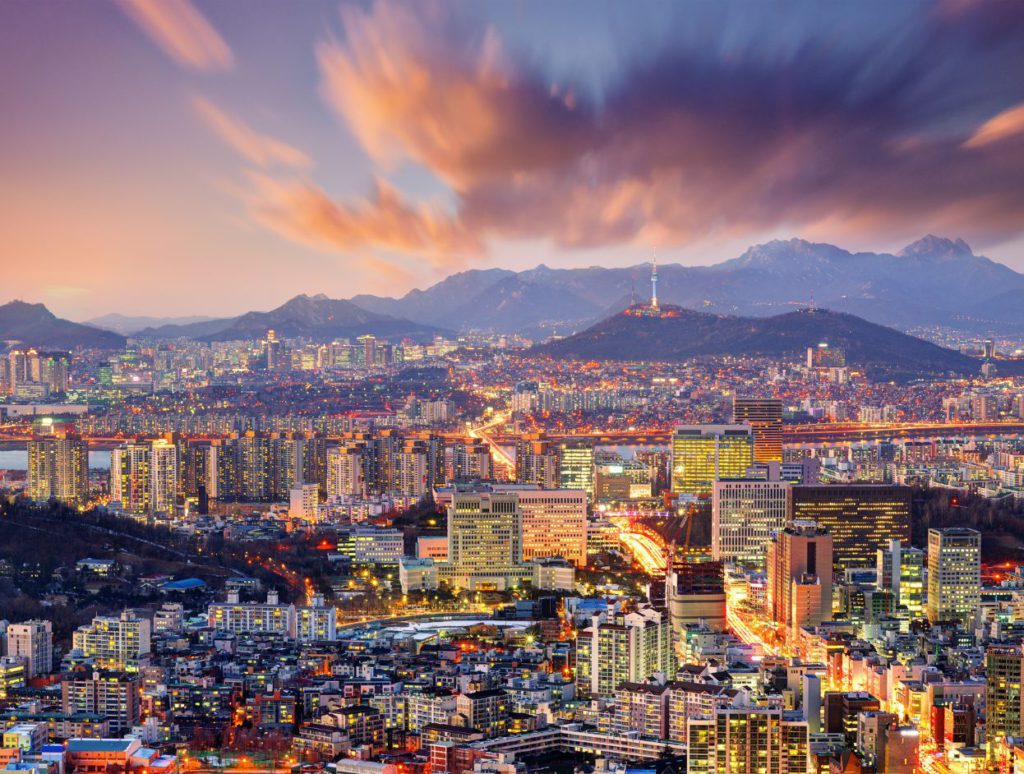
Busan
Busan is the second-largest city in South Korea and is another popular stop for tourists. It is located on the southeastern coast and is a beautiful beach city with a lot of sea flavour. The city is especially popular with Koreans to spend their summers on its lovely beaches and day markets selling freshly caught fish and seafood. While it is a fairly big economic and trade centre, some parts of the city may feel like a comely town. The scenery is all-rounded from the sea on one side to large rivers assimilating into the ocean with mountains in the background.
Some of the popular places to visit are Haedong Yonggungsa Temple, the most famous temple in Busan facing the ocean, Gamcheon Cultural Village – a cosy village painted in vibrant colours, Jagalchi Fish Market, and Songdo Marine Cable car. Of course, there are several beaches to add to this list. Busan is also known for its film industry and hosts popular events like Busan International Film Festival.
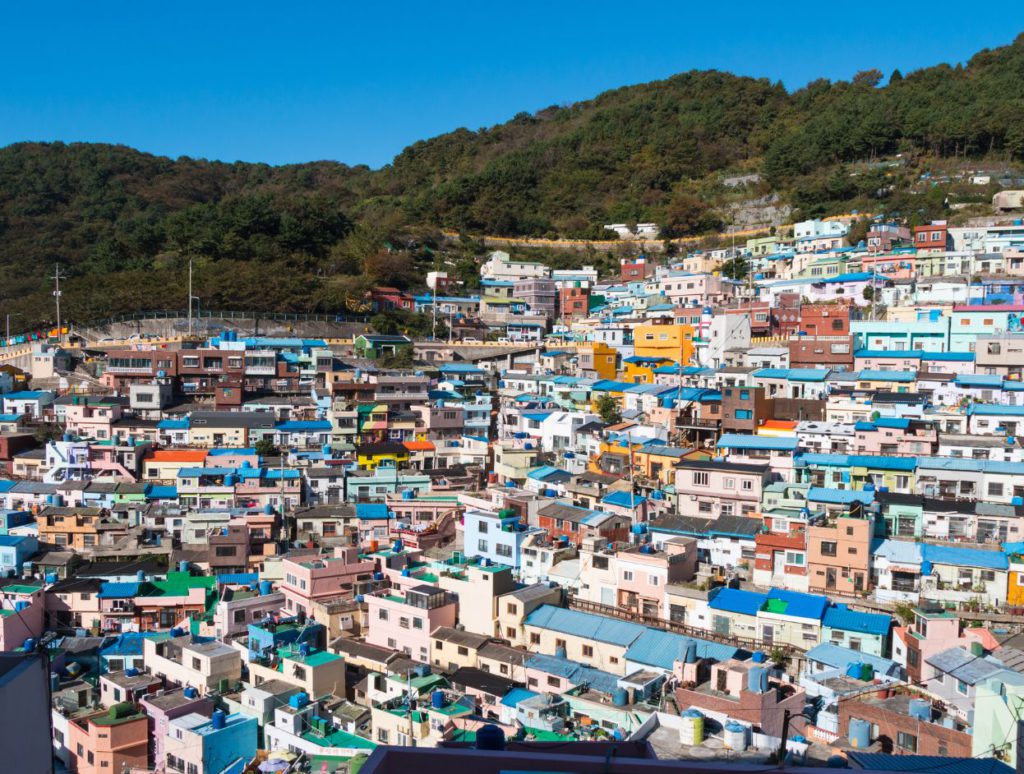
Jeju Island
Jeju is the last of the trio, another must-visit in South Korea. The island sits on the south of the Korean peninsula and has always been a popular holiday destination for locals, especially for honeymooners. The volcanic lava tubes that makeup around 10% of the island are designated UNESCO World Natural Heritage sites. You can take a short flight to Jeju or do this journey by ferry from Busan.
Some of the popular places to visit in Jeju are Seongsan Ilchulbong Tuff Cone, Cape Seopjikoji, Yongnunioreum Parasitic Cone and Manjanggul Lava Tube. And then there are forests, waterfalls, beaches and mountains that make for a scenic view as far as you can see. Jeju island also has a rich cultural history taking roots in the folk people and their culture. So make sure you explore that side of the island as well.
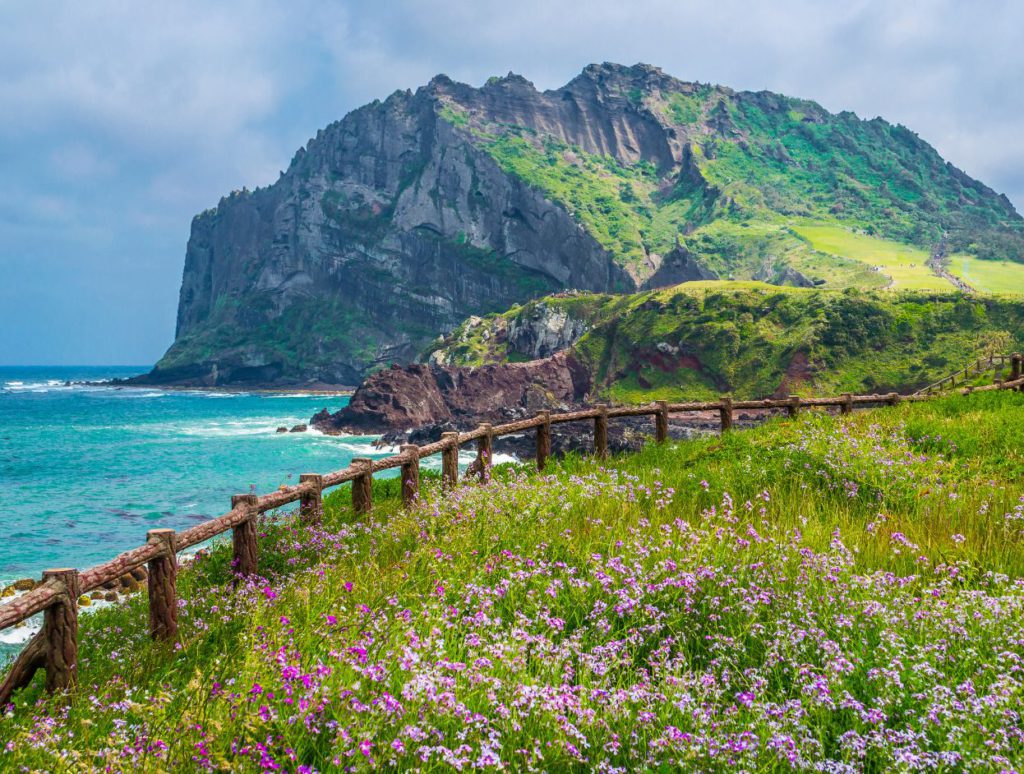
Nami Island
Nami is a river island located on the upper Han River, east of Seoul. It usually makes for a popular day trip from Seoul for most tourists. The island is developed as a resort island, so you can expect a lot of excitement. The island itself is an expression of art in blend with nature. The best part is, that it is worth visiting in all seasons since each season brings in a new landscape, although autumn might be the best.
As a popular day trip, adding a few more attractions to the itinerary is common. You can also visit the Garden of Morning Calm, Petite France, Little Italy, Alpaca World and Rail Bike Experience since all of them are in the nearby areas. However as you add more places you add to your itinerary, you will get less time to experience each place.
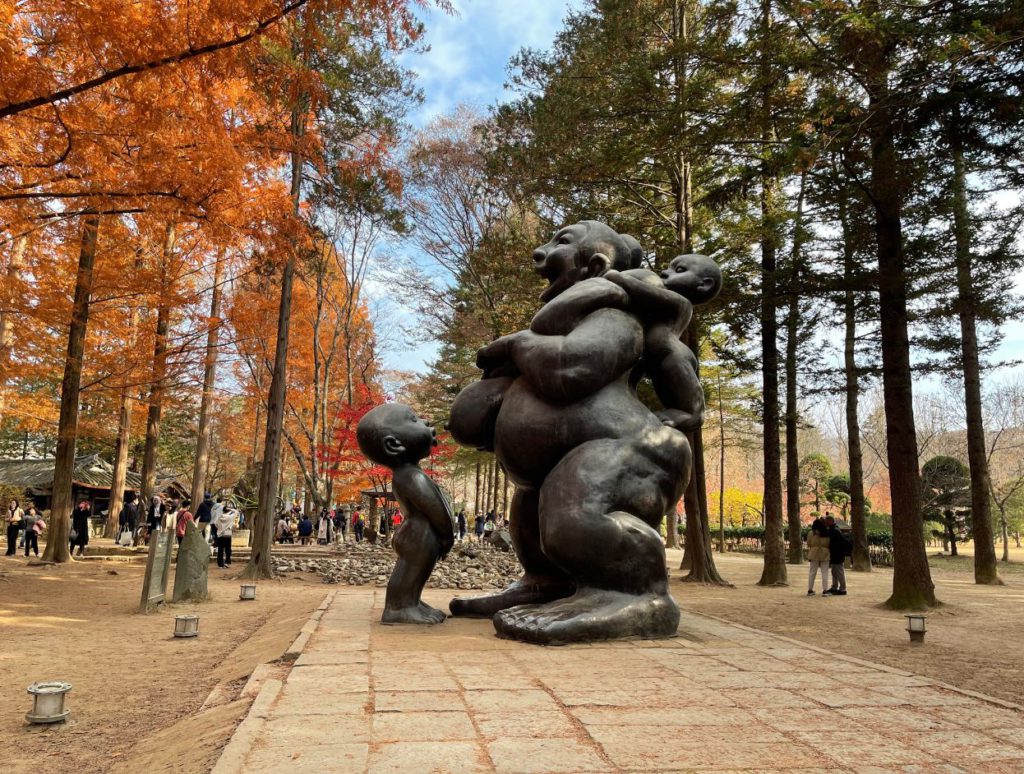
DMZ
DMZ or Demilitarized zone is a serious space. It is a 4-kilometre wide area that stretches from one end of the Korean peninsula to another. Its existence came into being after the end of the Korean War in 1953. The area is heavily militarized and heavy tensions prevail even today on both sides.
However, in recent years, South Korea has let civilians and tourists visit some parts of these borders as a war attraction. There is also a meeting point inside the DMX called the Joint Security Area where negotiations and talks take place between the two countries. This place sometimes can be visited via a special tour.
DMZ is usually toured as a day trip from Seoul. You cannot enter most parts of DMZ by yourself and will need a special guided tour. You can book one via online aggregators. The tour takes you through some of the major war milestones, events, old ammunitions, secret tunnels and more. On a clear day, you can even take a peek at a North Korean border village using binoculars. If you have the time, it makes for a unique experience.
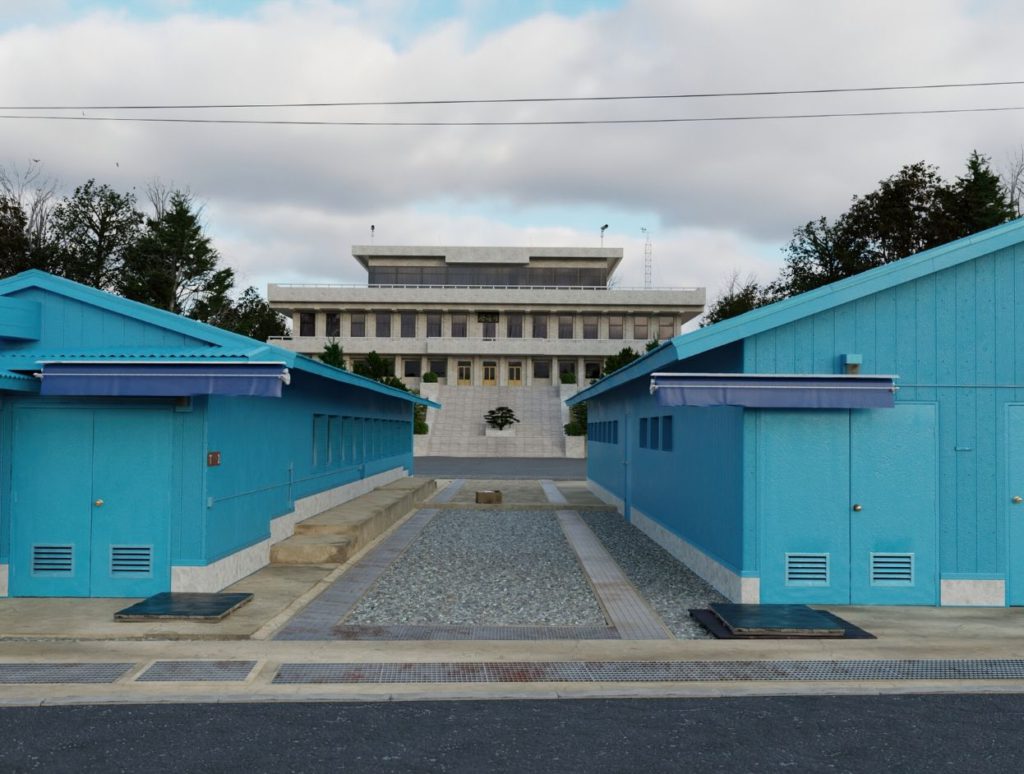
Geyongju
Geyongju is a historical city near Busan on South Korea’s southeastern coast. Gyeongju was once the capital of the Silla Kingdom that ruled Korea between the 9th and the 11th century. Most of it is perfectly intact, even today. You can expect rich cultural and religious heritage sites spread all across the city, many of them a part of the UNESCO Heritage list. It is also often called a ‘Museum with walls’.
It is common to visit Geyongju from Busan as a day trip and you can easily cover the most important points within a day. Some of the places worth visiting are Bulguksa Temple, Donggung Palace, Gyeongju National Park, Seokguram Grotto and Yangdong Folk Village. Add Cheomseongdae to the list which is the oldest astronomical observatory in Asia. End the day at Hwangnidan Street with its modern cafe, restaurants and photo studios for a different vibe.
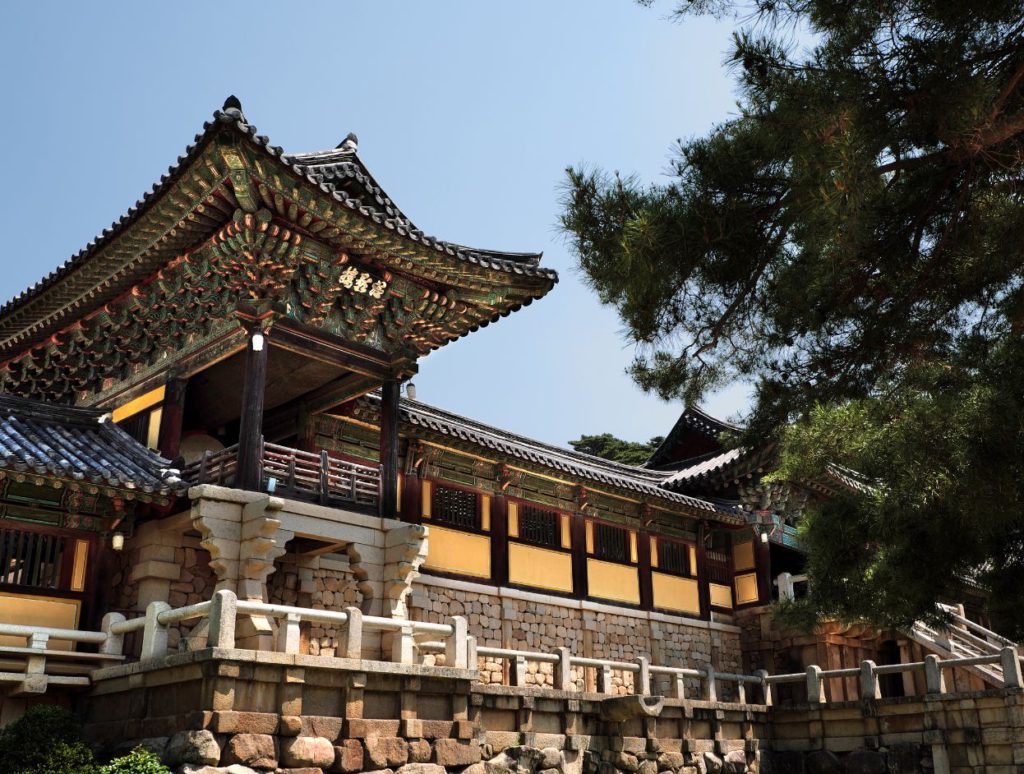
Seoraksan National Park
Seoraksan National Park is located in the northeast part of South Korea renowned for its biodiversity and mountain ridge structure. The national park is especially popular for hiking, trekking and a day outdoors. While you can do this hike as a day trip to Seoul, you can also stay and spend some time in the nearby areas for a couple of days or weekends.
There are many hiking trails inside the park and you can choose one based on the length and difficulty level. You can find the details at the tourist centre at the start. However, if you are not looking to walk so much, you can always take the cable car that takes you up and back the ridge and popular points. Besides these, you can also visit Sokcho Tourist & Fishery Market, Abai Village and Sokcho Beach if you have some time on your hands.
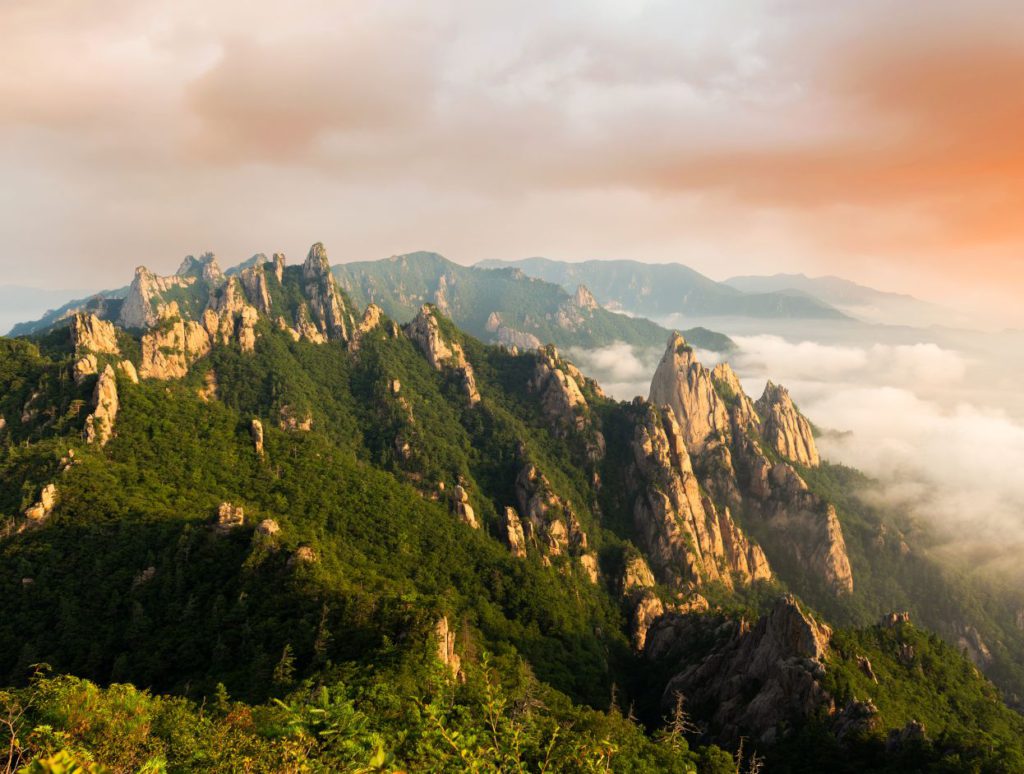
Andong
Andong or Andong Hahoe Folk Village is known as the ‘most Korean town in Korea’. It is a lovely rural town located on the banks of the Nakdong River surrounded by paddy fields and low hills in the background. Andong is a great place to travel back in time and experience a taste of rural life with a strong regional cultural heritage. It is also a designated UNESCO World Heritage Site.
However, Andong is most known for its folk mask dance also known as Hahoe Byeolsingut Tallori which has also acquired the status of UNESCO Intangible Cultural Heritage of Humanity. You can experience this in all its flavour during the Andong Mask festival that takes place every year between September-end and the first week of November. Another famous custom here is the Seonyujulbul Nori, a boat ride and fire play enjoyed by the nobility called Yangban.
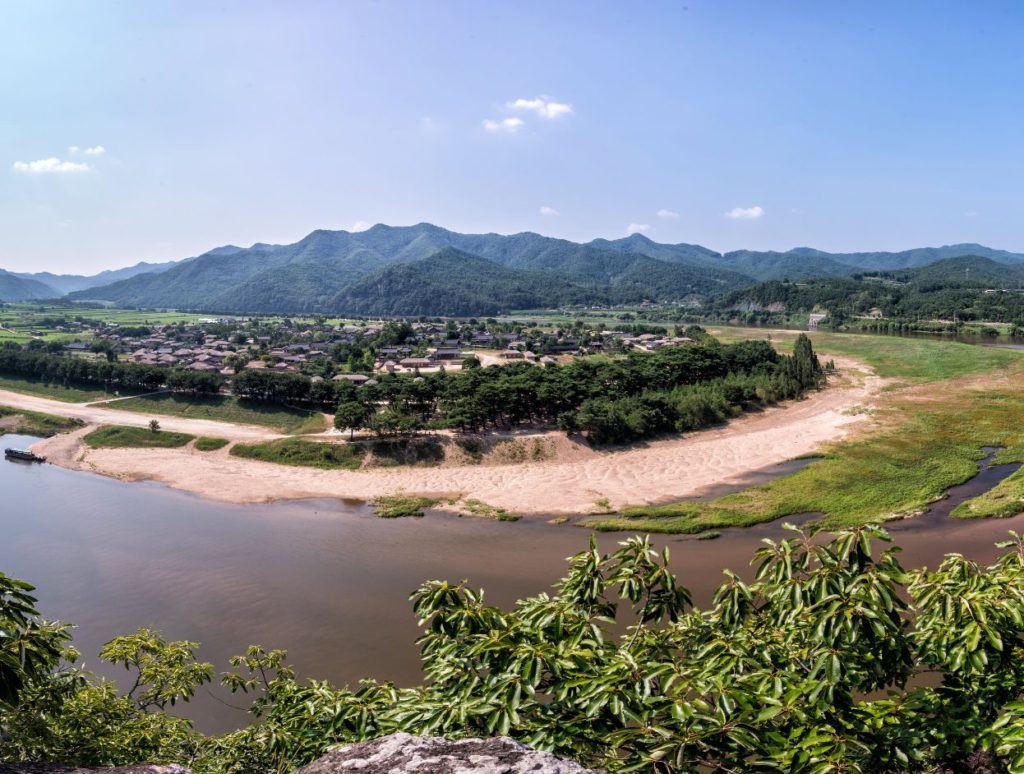
Boseong
If you have been in South Korea for a while, you must have had a taste of green tea somewhere. Wonder where does it come from? There are three major green tea fields in Korea – Boseong, Hadong and O’Sulloc. Boseong is the largest. It is privately owned and produces around 40% of South Korea’s green tea today.
You can visit Boseong as a day trip from Seoul, Busan or Gwangju. It is easy to enjoy the place on your own or you can take a day trip with a tour guide. Boseong Green Tea Festival is also a great time to visit apart from a light festival where the tea gardens are lit up at night. You can enjoy delicacies made out of green and even a farm stay in the area.
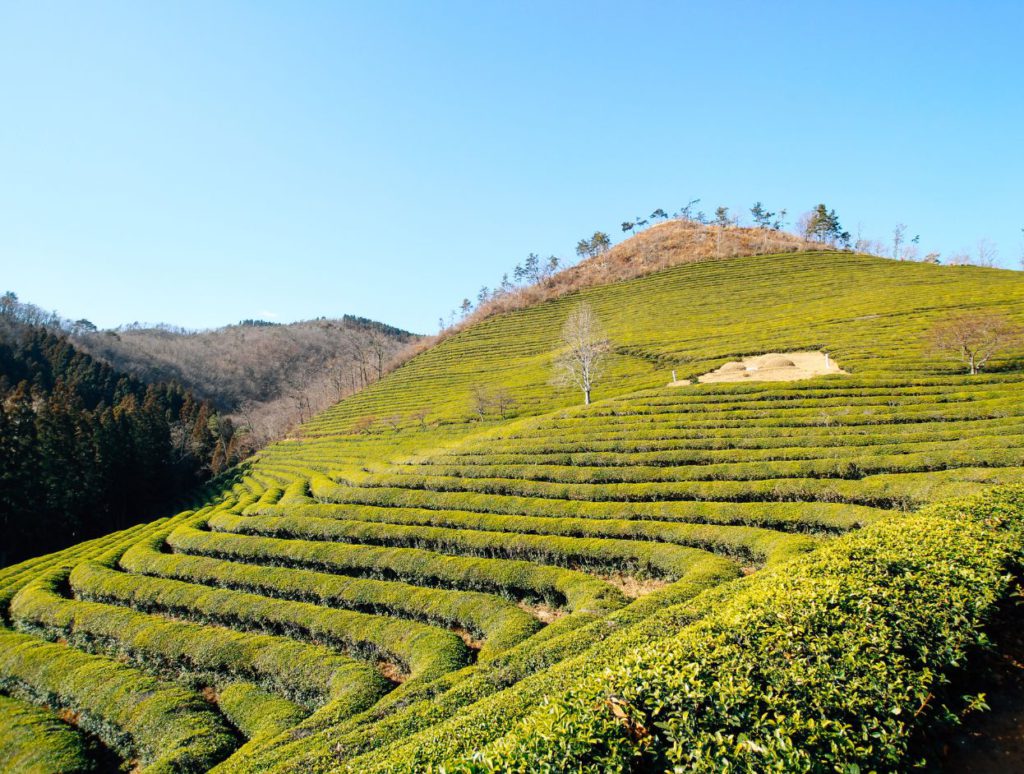
Jeonju
Jeonju is another city in South Korea attractive to those who are looking for a taste of culture and gastronomical delight. Although it is a fairly large city, it has both sides – the urban and the rural. The Jeonju Hanok village makes up for the cultural capital with 700 hanoks taking you through early footprints of King Taejo Yi Seong-gye, the king who founded the Joseon dynasty.
Jeonju is a great place to enjoy life inside a Hanok. You can book and stay at one, eat from the open kitchens and sleep on the paper floors with a traditional heating system. The night view of the Hanok village lit up with lights is not to be missed. Otherwise, you can enjoy the food in the historic city. Seek out local delicacies from marketplaces, street stalls and night markets that got the city awarded as the Creative City of Gastronomy by UNESCO.
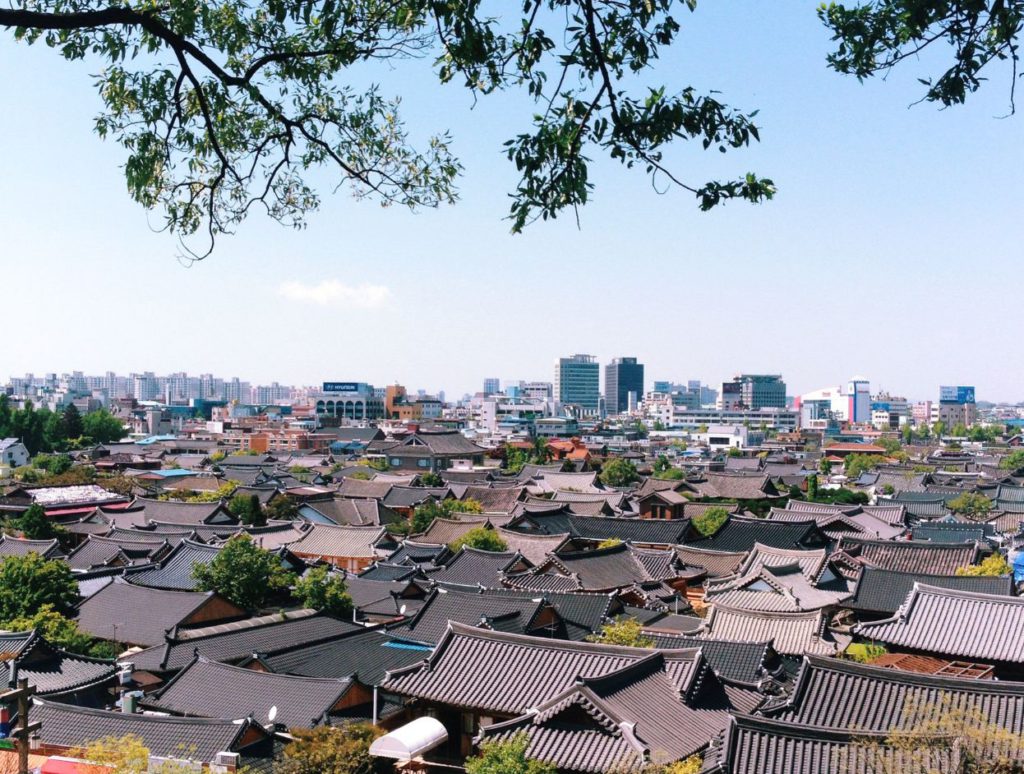
South Korea Travel Itinerary
South Korea travel itinerary for 5 days
Seoul - Nami Island - DMZ
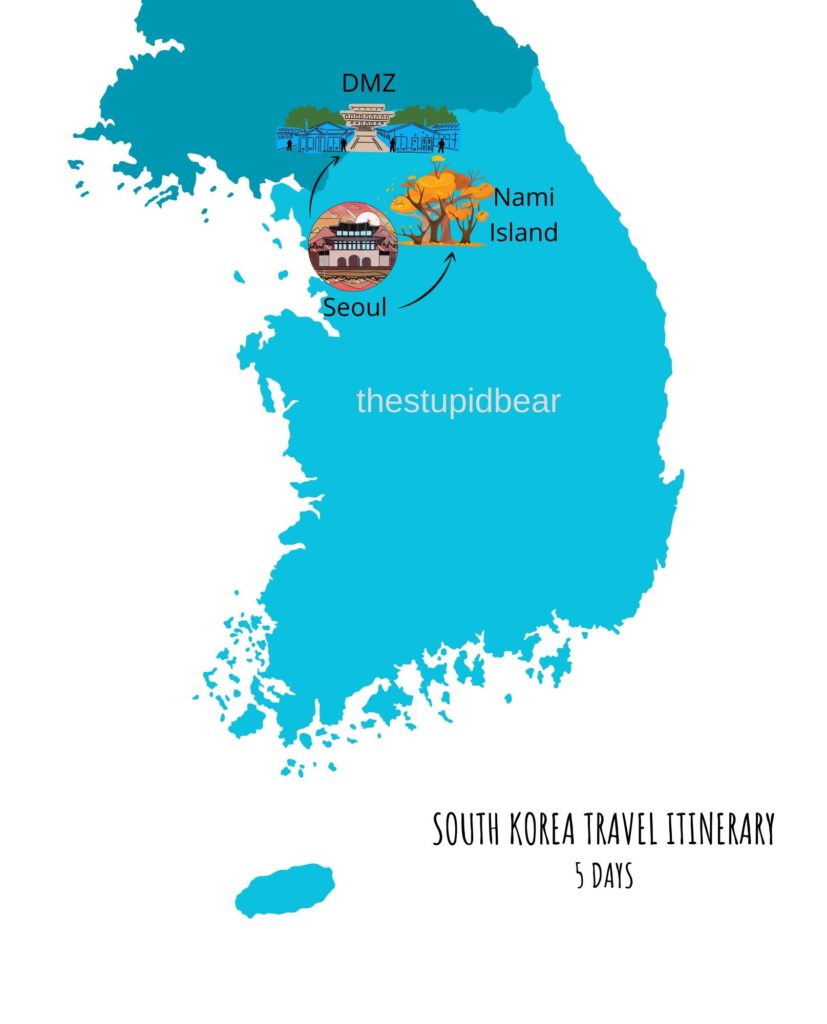
A travel itinerary to South Korea for 5 days must be kept short and sweet and mostly revolve around Seoul if you are visiting for the first time. Seoul is a great city to spend some time in. It has beautiful palaces, sprawling gardens, riverside views, national parks at arm’s length, hanok villages and a great food scene. You can aim to spend around 3 days in the city picking the places of your interest.
For the remainder, I would suggest you plan a day trip to some of the popular spots around Seoul for a day trip. Nami island and nearby attractions like The Garden of Morning Calm and Petite France make for a popular day trip from Seoul. DMZ or Demilitarized Zone between North and South Korea is also an interesting place to visit to learn more about the Korean War and present armistice. Several tour groups organise day trips to both these places that are great in value and convenience.
South Korea 7 days or 1 week
Seoul - Nami Island - DMZ - Busan
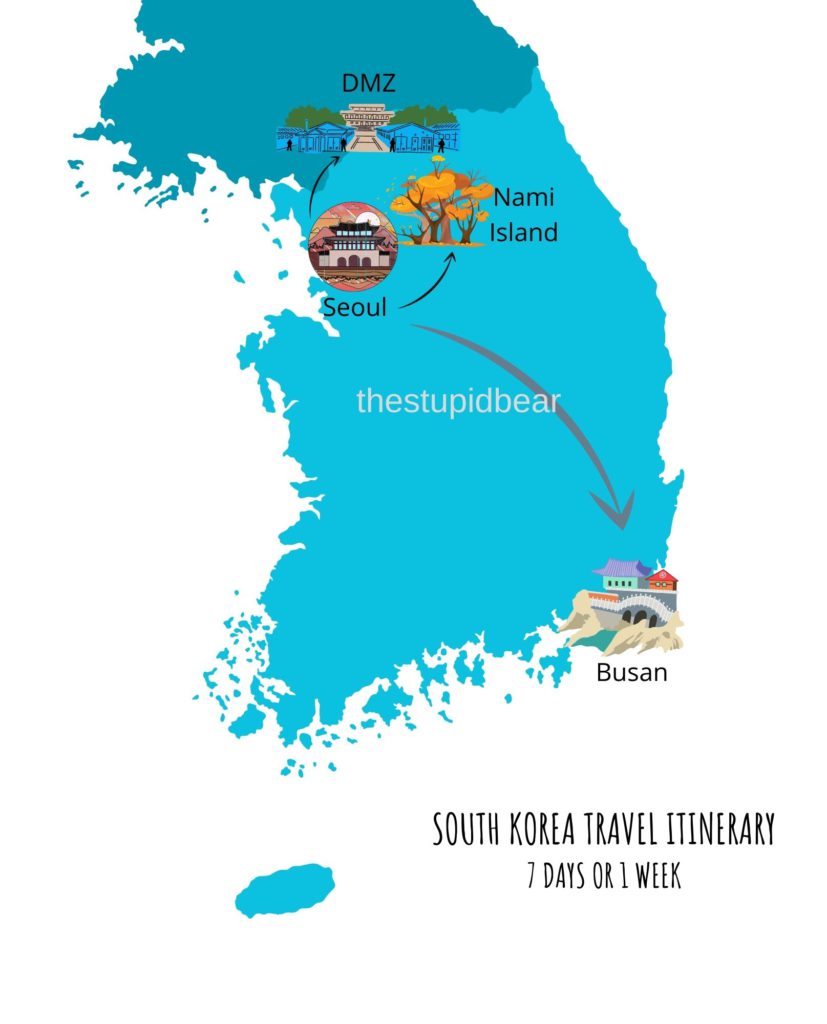
If you have a bit more time on your hands, you can look to head out of Seoul. Although there is so much to do in Seoul itself that you can spend the entire time in and around the city itself. But still, it would be great to explore other parts of the country as well. Busan is the next popular destination as a beach town on the southern coast of South Korea.
You can take a short train ride from Seoul and reach Busan in 3-4 hours. You can spend around 2 days or more in the area and then head back the same way. Combine a short trip to Busan with Seoul along with the day trips to Nami Island and DMZ and you have your 7-day or 1-week travel itinerary to South Korea.
South Korea 10 days itinerary
Seoul - Nami Island - DMZ - Busan - Jeju Island
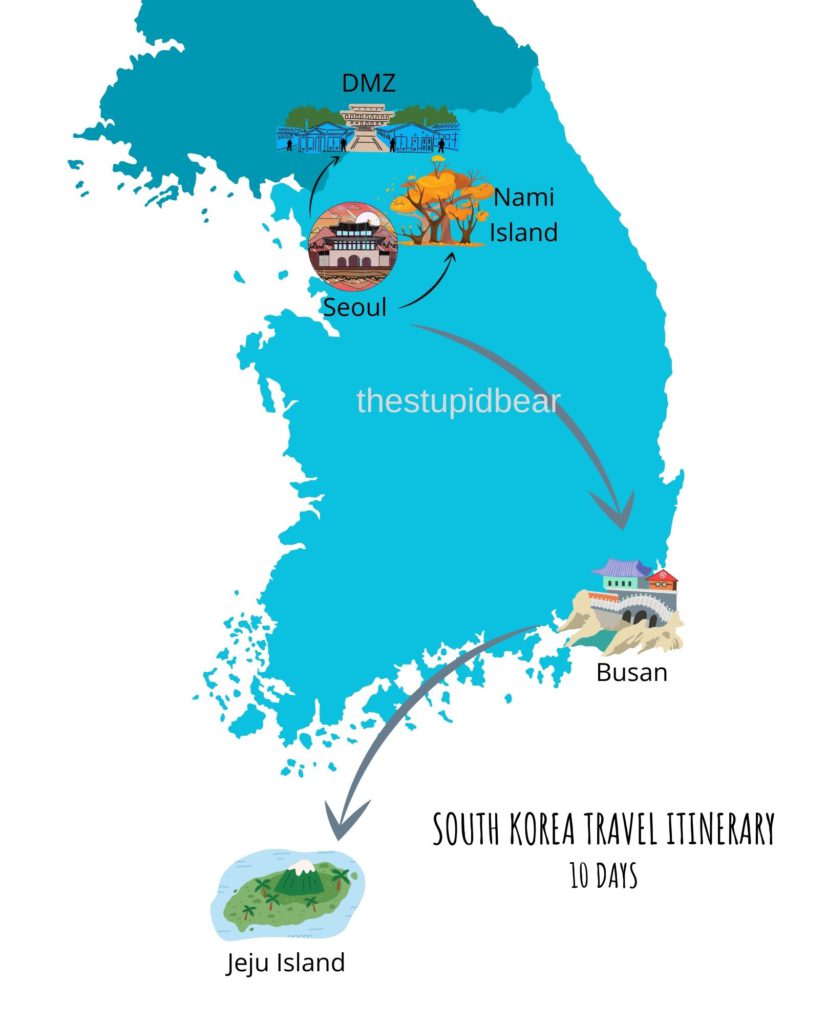
10 days is a sweet spot in time that will let you cover all the popular and iconic places in South Korea without having to rush a lot. You can start your time in Seoul and enjoy a couple of day trips to Nami Island, DMZ or other popular destinations in the area. If you enjoy company or guided tours, check out some walking tours inside Seoul city for some hidden gems.
From there head to Busan for a couple of days to enjoy the oceanside. Jeju Island is the last destination in your 10-day itinerary to South Korea. Jeju island is ‘THE’ holiday destination for most South Koreans. The lava island has many sides to it, from culinary to cultural and abundant in nature. You can take a ferry from Busan and return to Seoul by a direct ferry or a flight.
South Korea 14 days or 2 weeks itinerary
Seoul - Nami Island - DMZ - Seoraksan National Park - Busan - Gyeongju - Jeju Island
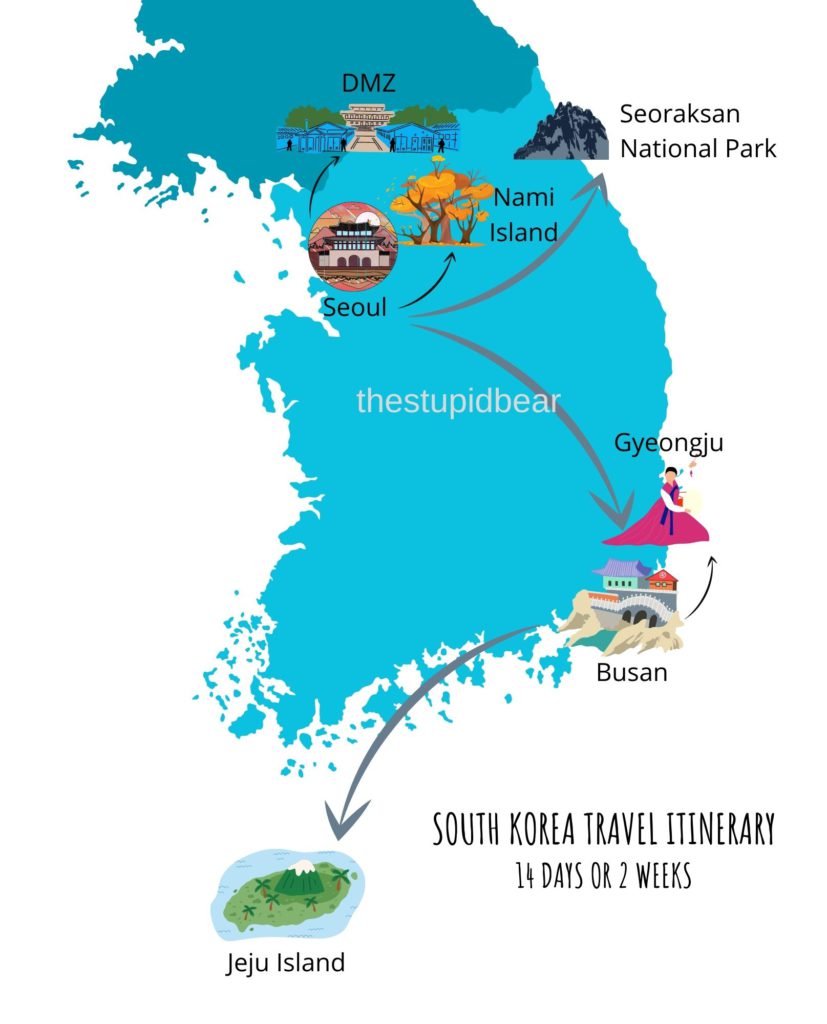
I would 14 days in South Korea as a luxury and very few people must have experienced Korea and its many sides as you can do in so much time. But it depends upon how much you want to squeeze in your travel itinerary of 14 days. Squeeze in too much and you may find yourself exhausted or unable to enjoy the place in peace.
I think 14 days will allow you to easily enjoy the main tourist areas in South Korea – Seoul, Busan and Jeju Island. But from there you can decide how much to add. As we mentioned earlier, Nami Island and DMZ are some of the popular day activities from Seoul. But instead of heading directly to Busan from Seoul, you can also head to Seoraksan National Park for outdoor time and then continue to Busan.
A day or two more in Busan can also give you enough time to visit Gyeongju. You can either visit it as a day trip or enjoy a night at a traditional hanok. From Busan, you can continue your journey to Jeju on a ferry and then go back to Seoul either by ferry or take a flight.
South Korea 21 days, 3 weeks or 1 month itinerary
Seoul - Nami Island - DMZ - Seoraksan National Park - Busan - Gyeongju - Andong - Jeju Island - Boseong - Jeonju
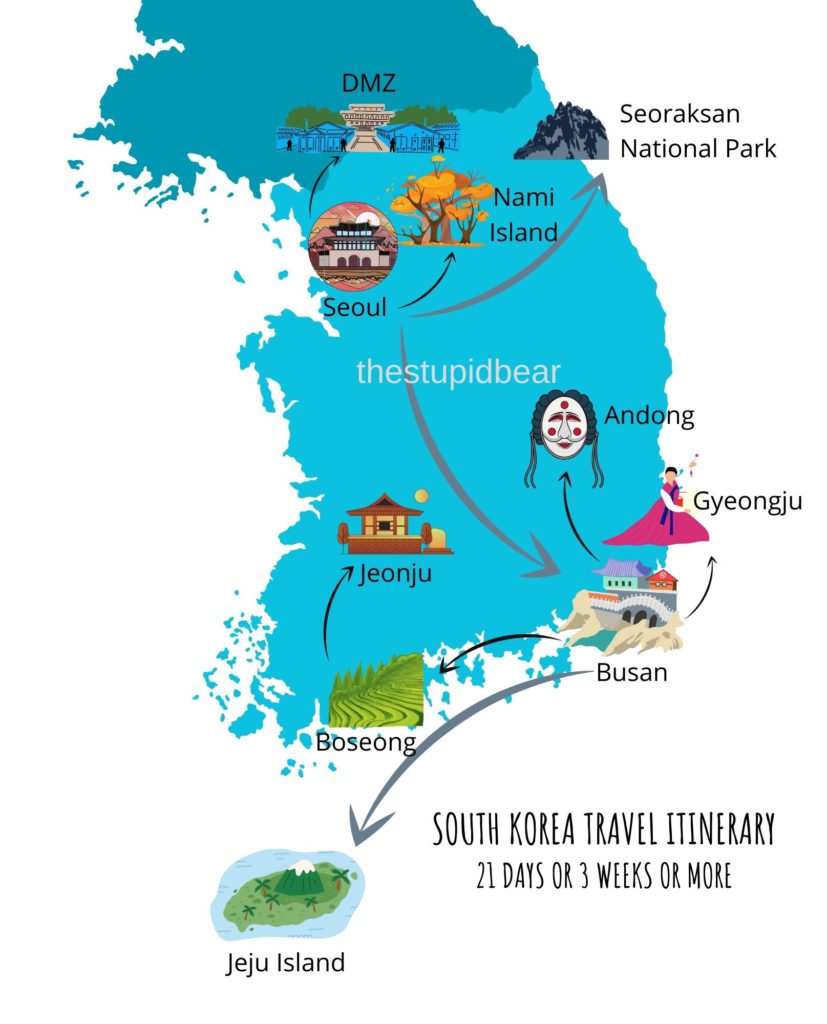
If you have even more time in South Korea, it is time to go all out. There is so much to see and explore that you can do in 21 days, 3 weeks, 1 month or even more. But we are adding some of the most important cultural spots to our existing list to give you the most value.
We start our journey in Seoul and maybe spend 3 days in the city. Take a couple of day trips around Seoul and head to Seoraksan National Park. You can do this as a day or a weekend trip and return to Seoul.
Take the train to Busan and reach the other corner of the South Korean peninsula. Spend as much time in Busan as you would like. Take a few day trips from Busan to places like Gyeongju and Andong. Both these places are culturally rich and are also great if you wish to spend a night in the nearby town.
From Busan continue your journey to Jeju Island and enjoy the place at your own pace. You can return to Busan on the same route to continue our journey onwards. The next stops from Busan are Boseong and Jeonju. While you can enjoy the lovely tea gardens in the Korean countryside in Boseon, Jeonju is another fantastic place to experience cultural and food heritage that dates back hundreds of years. Make your way back to Seoul from Jeonju by bus or train.






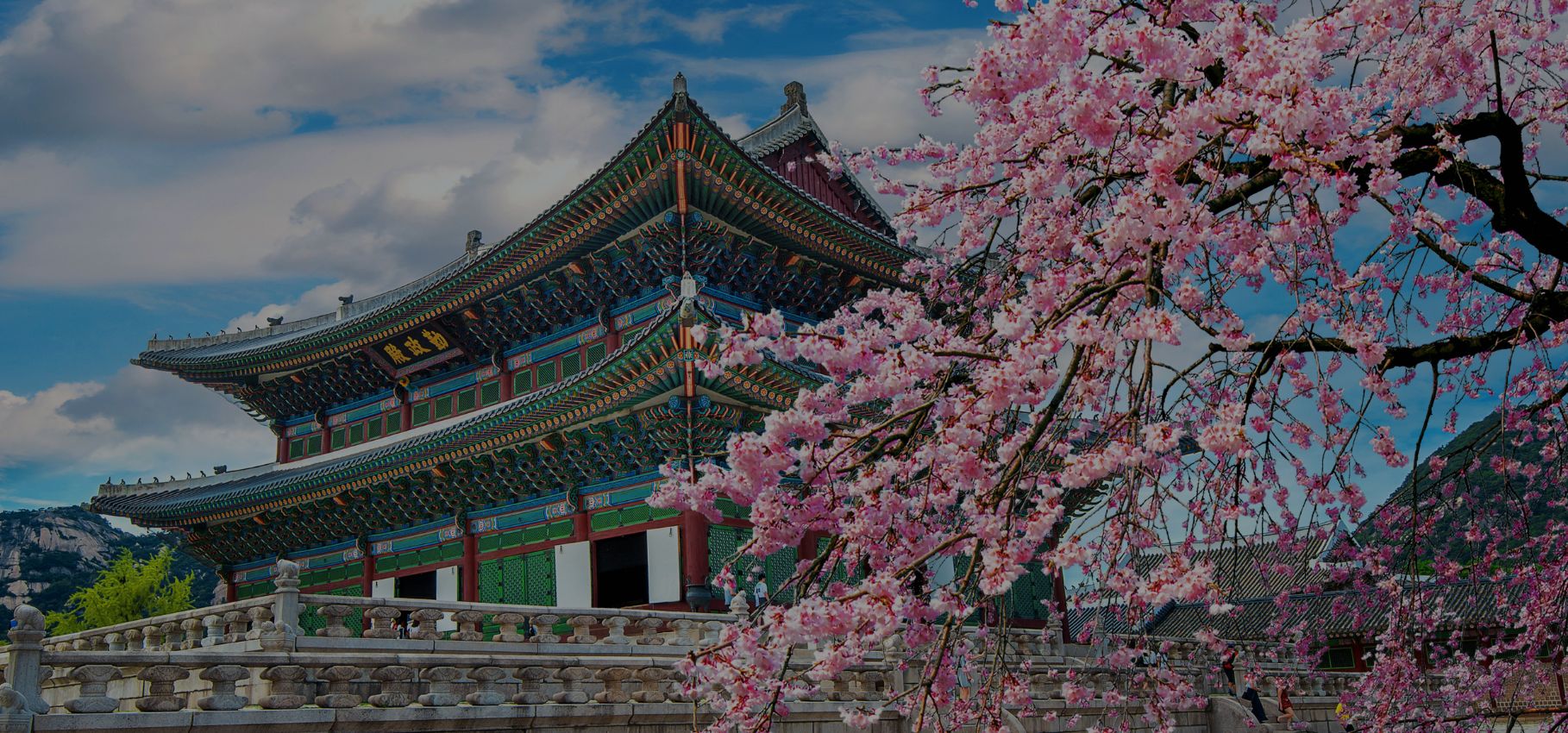
Rasik
Posted at 02:55h, 17 JanuaryAwesome!!!